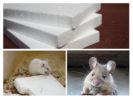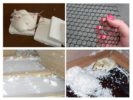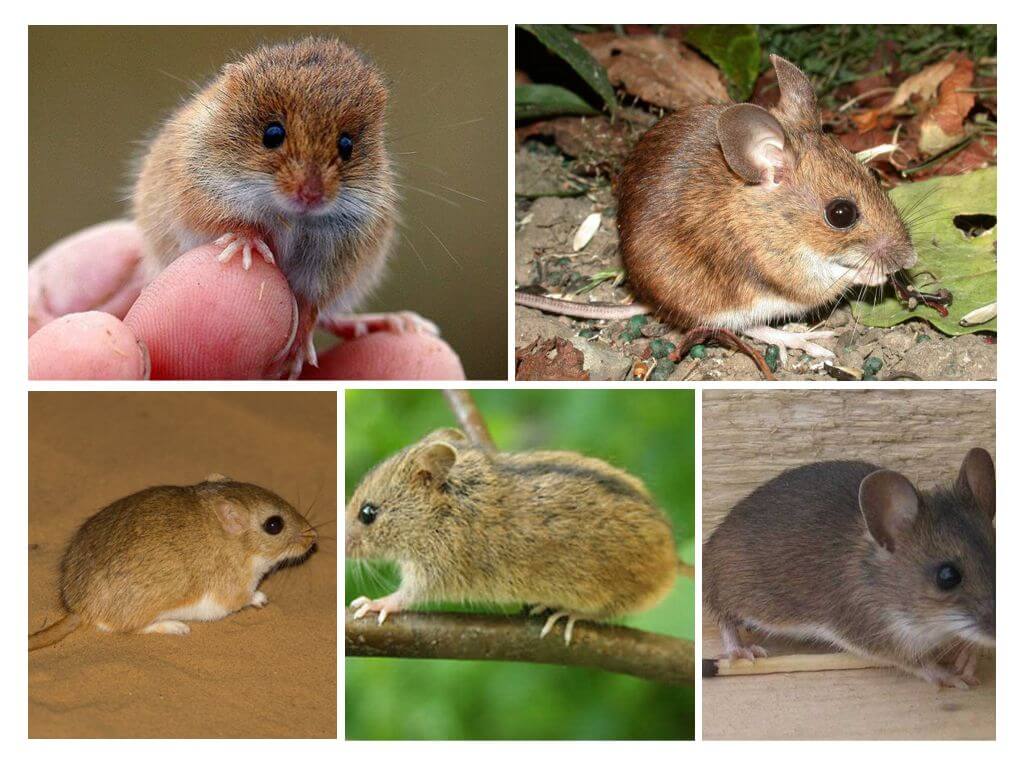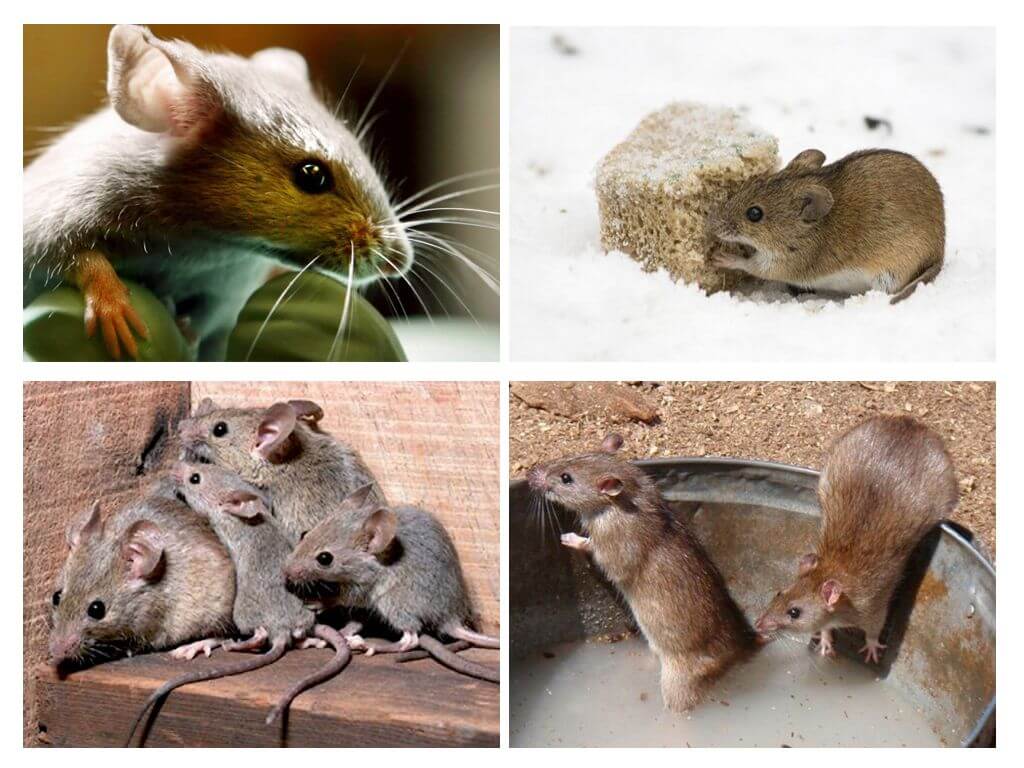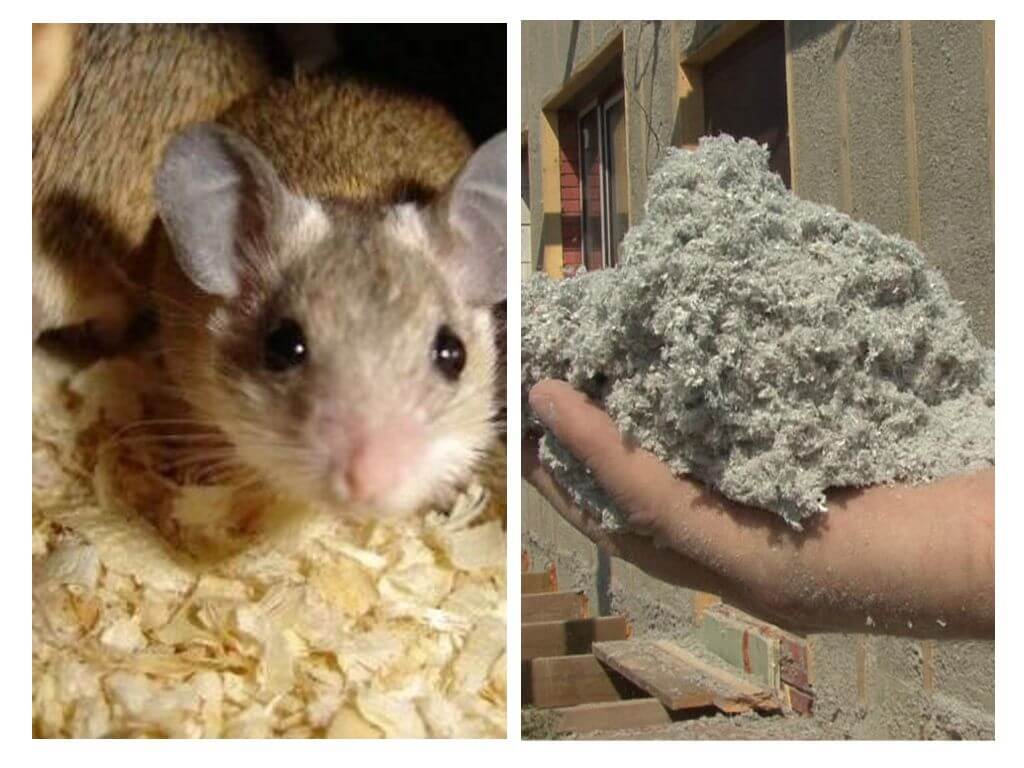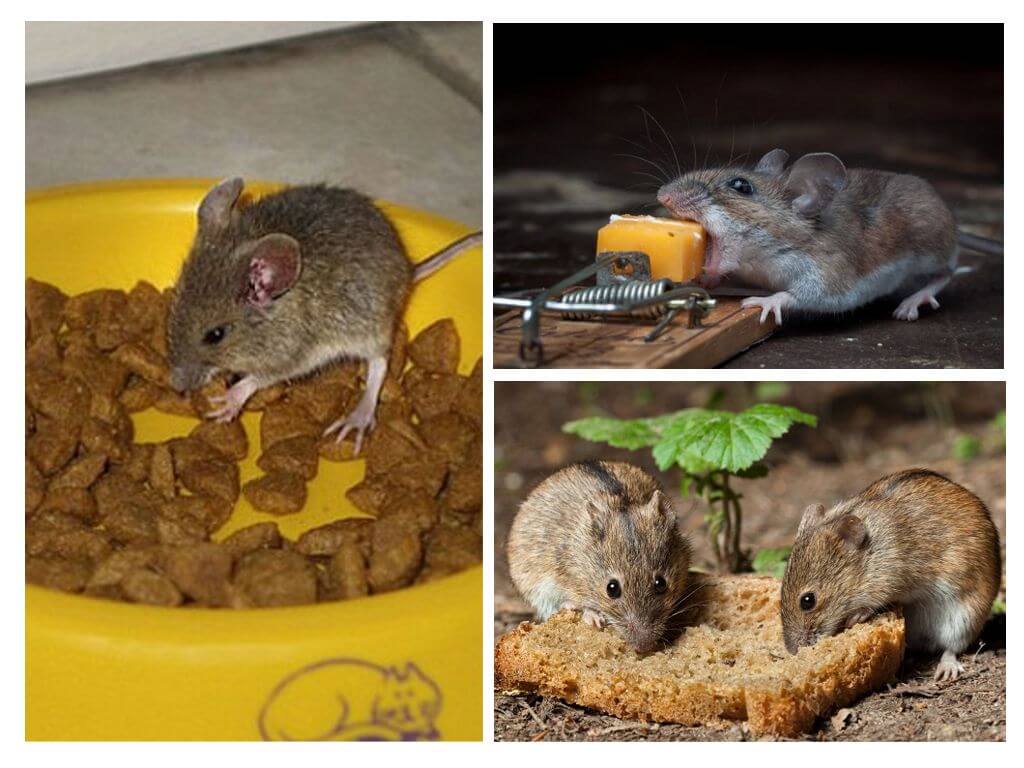- Styrofoam and mouse
- Protect Styrofoam from Mice
Polyfoam - a building material used to warm the facades of the building, houses outside and inside. Represents the made foam synthetic polyester. For a living creature, there is nothing valuable or useful in it. The answer to the question whether mice eat polystyrene is negative. But it is of interest to rodents.
Why do mice need foam
Rodents have a special structure of teeth. On the upper, lower jaw is a pair of incisors that appear closer to 20 days after birth, grow until the end of life. Teeth grow by 1 mm per day. If you do nothing with this, the mouse simply will not be able to close its mouth.
On a note!
Such mouse structure forces them to grind cutters on solid materials daily. For this reason, they gnaw at absolutely inedible "products", especially without going over. Plastic, concrete, brick, wood, fabric, polyester, polystyrene, etc. are used.
Mice also chew on polystyrene for some other reason:
- In a stressful situation. When there is a lot of noise in the room or there is a struggle for survival, habitat. Rodents in this way mark their territory, calm the nerves.
- Innovation. All unknown mouse materials taste. Useless "food" will not be eaten by rodents, but they will use it for other purposes.
- Building material for the nest. Not only people, but also mice evaluated the properties of the foam. Non-toxic, can be easily separated into pieces, has a high thermal insulation. Mice build their nests directly in the thickness of the foam, gnawing numerous moves there, or bite off parts, drag them to a place more convenient for them.
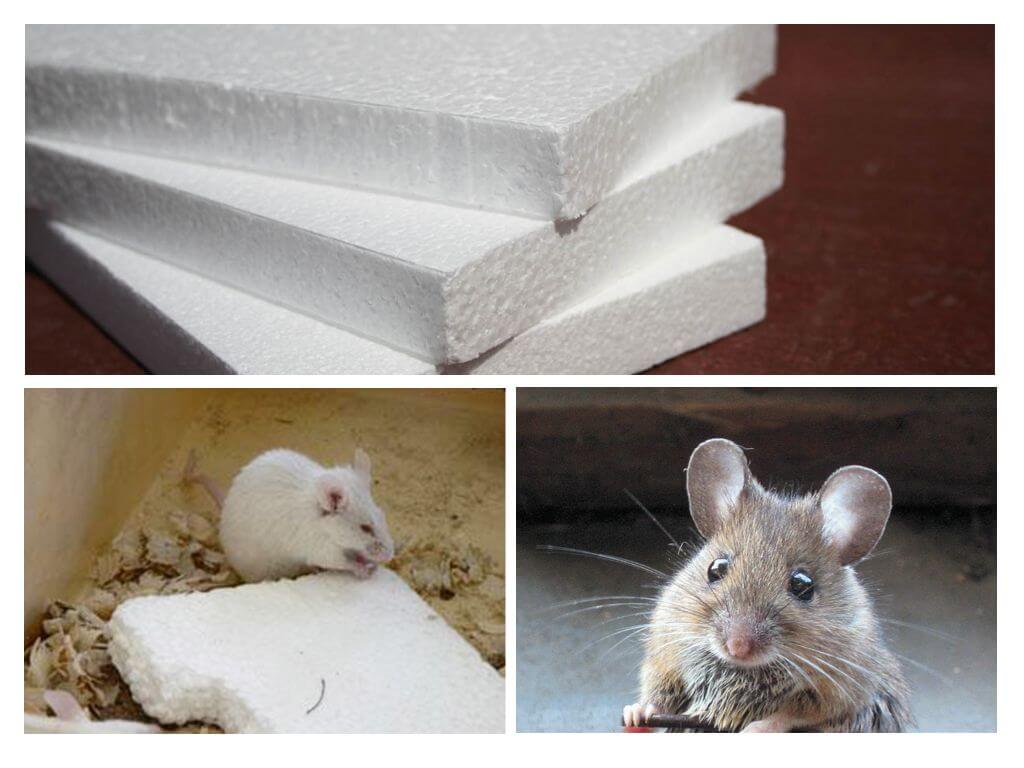
Polyfoam in the walls separates the outside of the building from the inside. Trying to get into the room, the mice gnaw everything, judging by their hardness. Seeing that the material lends itself well, the animals firmly achieve their goal. A kind of flaw in the construction. Allows pests to enter the house almost unhindered.
Scientific research
By order of manufacturers, experiments were conducted in laboratory conditions, during which they tried to find out how mice relate to polystyrene foam. Does it make interest for rodents what pests are capable of if they are not stopped in time.
- They tried to feed the hungry animals with synthetic polyester. Rodents refused to use as food. Turned it into dust, but did not eat.
- Food stocks were located behind the sheets of construction equipment. Foam mice made numerous moves trying to get to food. Then they began to use it as a building material for their nests. They live in polystyrene without harm to their health.
- Left at full disposal to rodents several sheets of polystyrene foam. For a month, only crumbs remained of him.
The conclusion suggests itself here: if rodents are wound up in the walls, do nothing with it, at the end of winter you can start dismantling the old thermal insulation and fixing the new one.
Eyewitnesses tell about appetites and taste preferences of mice, leaving their feedback.
Feedback
In the summer he insulated the house, in winter mice wound up in the walls with foam. You can’t drive them out of there, put in the house mouse trap. Poison for mice afraid to use. I’ll say that the cat doesn’t help either, if the mice have already settled in the walls. Can prevent mouse colonization.So, I had to tear off the bottom sheets in spring. Changed to more dense. He put up protection in the form of a metal mesh up to 1 m high. The next winter passed without rodents.
Kirill, Moscow
External wall protection against rodents
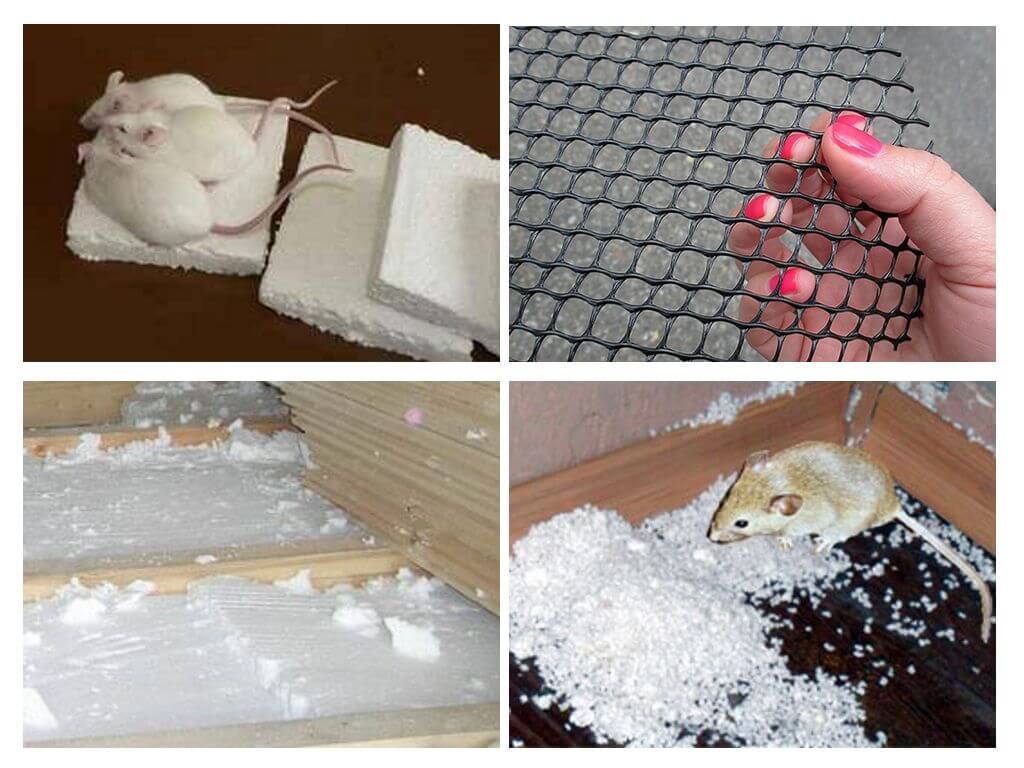
How to protect polystyrene from mice, you need to think in advance even during installation work. The outer layer should be protected with galvanized iron to a height of 30 cm. Pests only gnaw at the bottom of the building, trying to get inside. Mice cannot climb walls. You can protect the foam from the outside of the house with a metal mesh with small cells or use insulation that do not gnaw mice. Then the rodents will not be able to get into the house with all desire.
On a note!
Styrofoam and mice are inseparable. If it is in the house, rodents will certainly find it. To prevent damage to property, to protect thermal insulation, you need to buy a dense foam, in which the fibers are located a little differently, do not lend themselves to the teeth of mice, pests will not be able to gnaw it.
During installation, special attention should be paid to quality. Mice enter the house through the smallest, narrowest walls. There should be no flaws. If rodents cannot get inside, they are not destined to settle in the house.
Internal wall protection
Mice enter the house in the most unpredictable way. Tracking where they made moves is sometimes difficult. Indoors, the animal is looking for a suitable place to arrange its housing. Most often, under the floor, in the attic, in the walls, if there is suitable material there.
Inside the house to lead rodent control can be conducted in any convenient way, except for poison. If the foam is treated with poison, the corpses of mice may appear between the walls, which will eventually decompose. It’s very difficult to get from there, but get rid of the smell of mice quickly fail.
The inner part of the walls can also be protected with a metal mesh, any dense material. Or soak the foam with denatonium benzoate. The substance is not dangerous to humans, does not contain toxic ingredients, it simply has a pronounced bitter taste. Mice will not chew on such material; the walls will be completely safe. The bitter substance will protect from all pests, including rodents, insects.
Interesting!
Many people are interested in the question - mice like polystyrene or mineral wool. There are several varieties of mineral wool, including ecowool. Rodents build passages in it, drag it into nests, like polystyrene. They try to avoid glass wool, as small particles of glass bite into the paws and irritate the skin.
Almost all synthetic heaters lend themselves to mouse teeth, attract the interest of pests. The most important defense is the high quality of construction and installation works.
